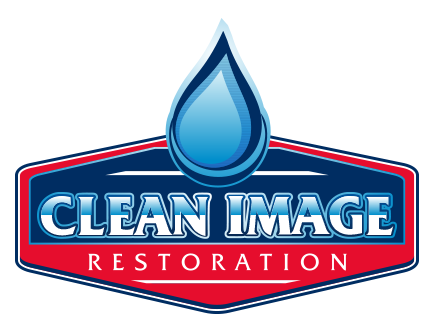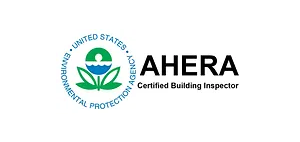Have you ever wondered if a small, seemingly harmless water leak could provoke a catastrophic ceiling collapse?
Ceiling water damage is not only common but can be quite destructive. Water leak damage, when left unchecked, can lead to severe consequences. These include mold growth, structural integrity concerns, and significant financial impacts from comprehensive water damage restoration.
The accumulated weight of stagnant water can exert undue pressure on the ceiling materials. Eventually, this can cause a collapse. This problem can be exacerbated during colder weather when dynamics shift, making vigilance all the more critical.
Key Takeaways
- Unnoticed water leaks can compromise your ceiling’s structural integrity.
- Mold growth from persistent moisture poses health risks.
- Ignoring water leak damage can lead to high repair costs over time.
- Structural components weakened by water can swell and eventually collapse.
- Regular monitoring can prevent catastrophic damage and high restoration costs.
Understanding Ceiling Water Damage
Water damage on ceilings comes from many sources. Knowing these causes helps prevent big problems. It’s key to find and fix water leaks to keep your home strong.
Common Causes of Ceiling Water Damage
Many things can cause water damage on ceilings. Plumbing issues like pipe bursts or small leaks are common. Also, bathroom leaks from old caulking or unsealed areas can lead to water buildup.
Roof problems, like roof leaks from bad shingles or ice dams that hold water, are another big cause. Keeping your plumbing in check and catching leaks early can help avoid ceiling damage.
Potential Consequences of Ignoring Water Damage
Not fixing ceiling water damage can cause big problems. At first, you might see discoloration, peeling paint, or water stains. If ignored, the ceiling can weaken, sag, or even fall.
Ignoring these signs can make repairs more expensive and unsafe. It’s important to keep your plumbing in good shape and act fast when you see water damage. This helps avoid big damage and keeps your home safe and stable.
Immediate Actions to Take When You Discover a Leak
Water leaks can cause a lot of damage if not fixed right away. Acting quickly can help lessen the damage and its effects. Here’s what you need to do:
Turning Off the Main Water Supply
The first and most important step is to stop the water flow. Find and turn off the main water valve. This stops the water from causing more damage. It’s crucial for your safety and helps contain the leak.
Stabilizing the Area
After shutting off the water, focus on preventing more damage. Move any valuable items away from the leak. Use buckets, tarps, or towels to catch and control the water.
If it’s safe, you can also make a hole in the ceiling. This lets the water drain safely and prevents the ceiling from collapsing.
Drying the area well is key. Use dehumidifiers and fans to dry it out and stop mold. Make sure the space behind the drywall is also dry to avoid mold and damage.
By acting fast, you can manage the situation until help arrives. This makes repairs more efficient and less expensive.
Signs Your Ceiling Has Water Damage
Spotting water damage in your ceiling can be tricky. Look out for ceiling discoloration. This might show up as yellowish-brown stains or water spots. Even if they seem dry, they could still mean there’s a leak.
Ceiling sagging is another clear sign. Water can make drywall or other materials bulge and sag. This can weaken your home’s structure and needs quick action.
Plaster damage is a big warning sign too. Painted plaster might peel, crack, or bubble from too much water. This shows the water has gone deep into the walls.
Water rings are another sign to watch for. They form in a circular pattern where water has dried out. These rings are a clear sign of water damage and need a detailed check to find and fix the problem.
Spotting these signs early can stop bigger problems. It helps keep your home safe and its value up.
How Water Leaks Can Lead to Ceiling Collapse
Water leaks often cause ceiling damage, threatening the building’s safety. When water gets into a ceiling, it can build up. This extra weight can damage the structure, sometimes causing it to collapse.
Early signs of trouble include a sagging or distorted ceiling. If the leak keeps going, the ceiling material gets soaked. This makes the ceiling weaker, raising the chance of it falling down.
When structural damage is clear, quick action is needed. Fixing the ceiling right away can stop a collapse. This keeps the building safe and sound for longer.
How to Prevent Ceiling Water Damage
Preventive maintenance is key to keeping your home’s ceiling safe and lasting longer. Regular checks and maintenance tasks can greatly lower the risk of water damage and ceiling collapse.
Importance of Regular Roof Maintenance
Regular roof inspections are crucial to catch damage early. Look for missing or damaged shingles that can let water in. Also, cleaning gutters is important to stop water from pooling and causing damage. These steps help keep your roof and ceiling strong.
Inspecting and Maintaining Plumbing Systems
Regular plumbing checks are vital for preventing leaks. Focus on areas like bathrooms and kitchens. Check for worn-out caulk and sweating pipes, and make sure all connections are tight. Fixing these issues quickly can prevent water damage to your ceiling.
Repairing Water-Damaged Ceilings
Fixing water-damaged ceilings starts with understanding the damage’s extent. Homeowners might tackle minor issues themselves or seek help for bigger problems.
DIY Repairs vs. Professional Help
For small stains or minor drywall issues, DIY fixes work well. You can use spackling compounds and repaint. But, for major damage from leaks or burst pipes, you need pros.
Experts ensure the ceiling’s safety and use special tools for cleanup. They know how to fix big problems.
When to Call a Restoration Specialist
Knowing when DIY isn’t enough is key. If mold or structural damage is possible, call the experts. Mold removal needs special safety and skills to avoid more harm.
Water damage restoration specialists also do thorough cleanup. They make sure the area is dry, fixed, and safe from future damage.
Conclusion
Keeping your home safe from water leaks is a big job. It needs careful watching and smart actions. By being proactive, you can protect your home’s structure and avoid expensive repairs.
Checking your roof and plumbing often is key. This helps stop damage before it starts. If you find a leak, turn off the water right away. This helps prevent more damage.
Spotting water damage early is very important. Look for brown stains, sagging spots, and mold. These signs mean you need to act fast.
Quick fixes can often solve big problems. But, some jobs need a pro to do right. DIY might not always work.
Being ready for emergencies and keeping up with maintenance helps a lot. This way, you can avoid water damage and keep your home safe. Taking these steps keeps your home strong and your mind at ease.






